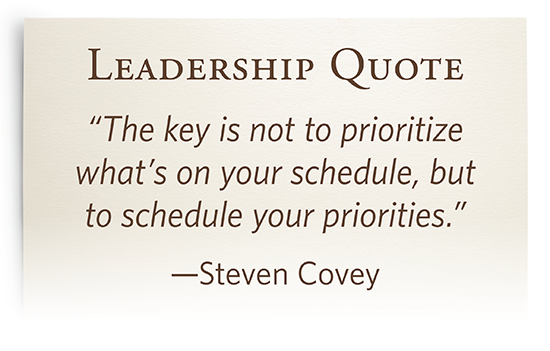
December 2019 -January 2020
On Assignment
------------------
|





The column "Leadership Whiteboard" provides a short visual leadership coaching moment. It introduces and explains a new sketch in each issue, provides leadership coaching for further development, and shares a leadership quote and recommended book.
Multi-Tasking & Time Management, Part 1
A letter from William Carey (missionary to India) to Ryland on June 12, 1806,
talking about his daily schedule:
I rose this day at a quarter before six, read a chapter in the Hebrew
Bible, and spent the time till seven in private addresses to God and then
attended family prayer with the servants in Bengalee. While tea was pouring out, I read a little in Persian with a Moonshi who was waiting when I left my bedroom. Read also before breakfast a portion of the Scriptures in Hindoosthanee. The moment breakfast was over I sat down
to the translation of the Ramayana from Sanskrit, with a pundit. Continued this translation until ten o'clock, at which time I went to the College, and attended the duties there til between one and two o'clock. When I returned home, I examined a proof sheet of the Bengali translation of Jeremiah, which took till dinnertime. After dinner translated with the assistant of the chief pundit of the college, greatest part of the eighth chapter of Matthew, into Sanskrit. This employed me till six... After this I concluded the evening by reading a chapter in the Greek testament, and commending myself to God. I have never more time in a day than this, though the exercises vary.
That phrase, “I have never more time in a day than this” means Carey wished he had more time to do more. Most people who read what Carey accomplished in an average day find themselves exhausted. I consider myself a fairly high capacity multi-tasker but compared to Carey, I feel inferior. Thankfully, the goal of this column is not to be like Carey but to learn the principles of multi-tasking and time management from leaders like Carey.

Value can be found in multi-tasking versus a single-project-focused approach. Let’s clarify two definitions, a task and a project. A project is a big endeavor that cannot be completed in one sitting. A task can be completed in a single sitting or a day. You should complete all tasks once you start them. Completing tasks moves you closer to completion of projects, but these multiple task sessions provide intermittent reflection. The in-between analysis offers alternative ways to solve the problem or to gain insight.
Start a project, work on it by completing a task that advances the project, and then set the project aside. Your mind continues to analyze that project in the background while you move on to other tasks. When you return to the project, you may be surprised by a new perspective that enhances the outcome. Try this approach in sermon building, project planning, or planning a date with your spouse.
Like Carey's concurrent multiple projects, you can accomplish tasks that lead to project completion while swapping between major projects. The advantage comes from thinking and planning between tasks, which helps reduce total time on the project and enhances the overall quality. It’s like the clarity from rereading an article or project from three days earlier. Here is the key: break big projects down into many smaller tasks and dedicate time to the tasks daily; within days, you will accomplish several big projects. Adjust your deadlines to stretch out the projects. It is surprising how well this process works to increase your capacity to handle many major projects with the same ease that most people handle one or two. (In the next edition, we will examine principles for time management to keep you on task.)
About the Columnist: Ron Hunter Jr., Ph.D., is CEO of Randall House
Publications.
|
|

